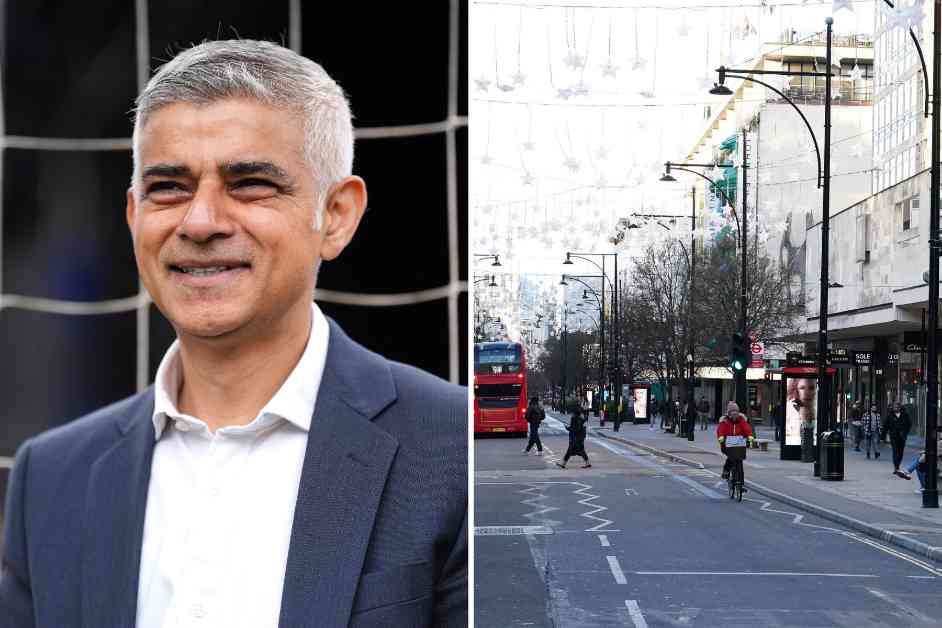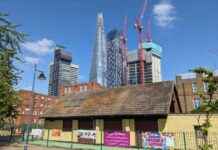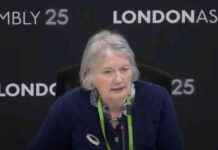London Mayor Sadiq Khan has recently unveiled plans to ban traffic on Oxford Street, one of London’s most iconic shopping districts. The proposal aims to transform the bustling area into a pedestrian-friendly zone, enhancing the overall experience for shoppers, residents, workers, and tourists alike.
Support for the pedestrianisation project has been voiced by the Government, with Deputy Prime Minister Angela Rayner expressing enthusiasm for the initiative. Rayner believes that the ban on traffic will provide Oxford Street with the much-needed boost to elevate its status as a premier shopping destination.
Oxford Street, known for its vibrant atmosphere and diverse range of stores, attracts approximately half a million visitors each day. However, concerns over congestion and pollution have plagued the street in recent years, prompting Mayor Khan to take action in revitalising this renowned retail hub.
Previous attempts to implement a traffic ban on Oxford Street were thwarted by the former Conservative-led Westminster City Council in 2018. Despite these challenges, Khan remains determined to push through his vision for the area’s transformation.
In a statement regarding the plan, Mayor Khan emphasized the significance of Oxford Street in the retail sector, acknowledging its decline in recent years. He stressed the urgent need for intervention to rejuvenate the high street and restore its former glory as a premier shopping destination.
Collaboration with the new Government, local retailers, and businesses is key to the success of the pedestrianisation project. Khan envisions a revitalised Oxford Street that not only showcases the best of London’s retail offerings but also creates new job opportunities and drives economic prosperity for the city and the wider country.
Deputy Prime Minister Rayner echoed Khan’s sentiments, highlighting the importance of preserving Oxford Street’s status as a global shopping hotspot. By working together with local leaders and stakeholders, she believes that the proposed revitalisation plan will stimulate growth, boost economic activity, and enhance London’s night-time economy.
The success of Mayor Khan’s ambitious proposal hinges on obtaining approval from Secretary of State for Housing, Communities, and Local Government, Angela Rayner. This approval would pave the way for the establishment of a new Mayoral Development Corporation, marking a significant step towards the transformation of Oxford Street.
Challenges and Opportunities
The pedestrianisation of Oxford Street presents both challenges and opportunities for the city. While the ban on traffic may initially disrupt the flow of vehicles in the area, it opens up new possibilities for creating a vibrant and pedestrian-friendly environment. By reducing congestion and pollution, the project aims to enhance the overall appeal of Oxford Street and attract more visitors.
One of the key challenges facing the pedestrianisation plan is the need to address concerns from local businesses and residents who rely on vehicular access to the area. Balancing the interests of various stakeholders will be crucial in ensuring the successful implementation of the project.
On the other hand, the pedestrianisation of Oxford Street also presents an opportunity to showcase London’s commitment to sustainable urban development. By prioritising the needs of pedestrians and cyclists, the project aligns with the city’s long-term goals of reducing emissions and promoting green transportation alternatives.
Community Engagement and Consultation
Mayor Khan’s proposal for banning traffic on Oxford Street underscores the importance of community engagement and consultation in urban planning initiatives. The decision to pedestrianise a major thoroughfare like Oxford Street requires input from a diverse range of stakeholders, including residents, businesses, and visitors.
Engaging with the local community through public consultations and feedback sessions will be essential in addressing concerns and gathering valuable insights for the project. By involving residents and businesses in the decision-making process, the Mayor can ensure that the pedestrianisation plan reflects the needs and priorities of those directly impacted by the changes.
Furthermore, transparency and openness in the consultation process will build trust and foster a sense of ownership among stakeholders. By keeping the public informed about the progress of the project and seeking their input at every stage, Mayor Khan can demonstrate his commitment to inclusive and participatory urban planning.
Economic Impact and Future Prospects
The pedestrianisation of Oxford Street is expected to have a significant economic impact on the surrounding area. By creating a more pedestrian-friendly environment, the project aims to attract more visitors, boost retail sales, and stimulate economic activity in the district.
Local businesses stand to benefit from increased foot traffic and improved accessibility, leading to a potential rise in revenue and job opportunities. The revitalisation of Oxford Street as a car-free zone could also attract new investments and business ventures, further contributing to the area’s economic growth.
Looking ahead, the success of the pedestrianisation project could serve as a model for future urban development initiatives in London and beyond. By prioritising sustainable and people-centric design principles, Mayor Khan’s vision for Oxford Street sets a precedent for creating inclusive, vibrant, and environmentally-friendly urban spaces.
In conclusion, Mayor Sadiq Khan’s plan to ban traffic on Oxford Street represents a bold and transformative step towards revitalising one of London’s most iconic shopping districts. By prioritising pedestrian access and sustainable urban development, the project aims to enhance the overall experience for visitors, residents, and businesses while driving economic growth and prosperity for the city. Through collaboration with the Government and local stakeholders, Mayor Khan’s vision for a car-free Oxford Street sets a new standard for urban planning and sustainable development in the heart of London.





















